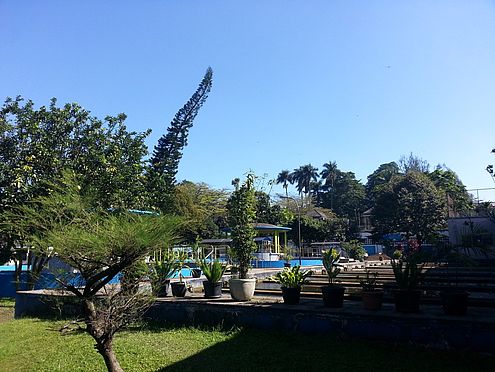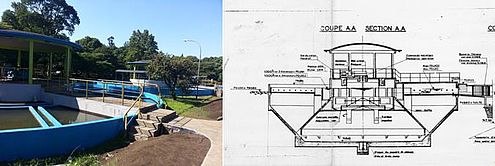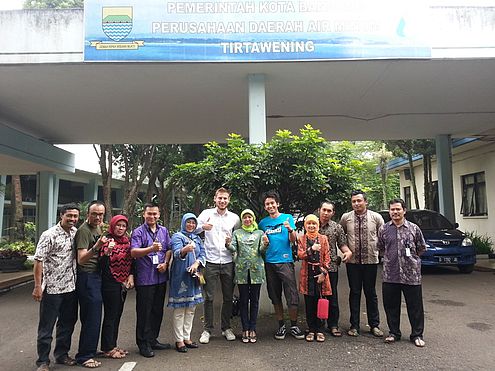Quality improvements at PDAM Tirtawening Kota Bandung
Hidde Schijfsma & Deniz Hofmeister

Preface
This report is for the BSc Thesis of Civil Engineering at the TU Delft. The report is a research on water quality in a water treatment facility in Bandung. Furthermore, it is to review the current situation and highlight the problems that are occurring in the water treatment plant.

Introduction
The water produced by the water treatment plant in Bandung is of not a good quality. Things need to be improved and our goal is to find the bottlenecks within the system. The idea is to find the solutions for the problems and for that the whole process will be scrutinized. The following important information will be gathered: Aluminum concentrations, turbidity, velocity gradients, flow rates and backwash losses.

Investigation
During our investigation the plant was operating higher than its designed flow rate values. Almost all the parts of the plant were overloaded. This caused flooding of the waterfalls and sometimes flooding of the flocculation and sedimentation basins. The result for this neglectful usage is a highly turbid effluent. The water treatment facility was not ideally controlled, it was controlled by intuition. There are no set guidelines for backwashing, flow rate control, maintenance or aluminium dosing. After a visual inspection we followed up by taking measurements.

Results
After the measurements have been taken all the data was processed and some problems became apparent. The turbidity after the sedimentation, as well as after the filtration is too high and because of that also the water delivered to the distribution network.
It becomes apparent that there is not a single factor that causes these problems. It’s a chain of small problems all contributing to the highly turbid effluent. The chain started already at the coagulation with bad mixing and incorrect coagulant dosage. Each subsequent step also showed problems: Incorrect mixing speeds at the flocculation, all the way up to the infrequent backwashing of rapid sand filters. The reasons for these problems varied wildly. We were able to find solutions for some of the problems, however some remained unclear to what caused the problem in the first place. We ran out of time to investigate all the problems we found.

Evaluation
The road leading up to this project was long. The preparation for it took more than halve a year. We faced a lot of problems that needed to be taken care of. Starting from visa’s and customs denying our measurement equipment all the way up to not being able to do some measurements because of their unreachable places. However we managed to overcome these problems and succeeded in our goals. We managed to get the data we wanted and are very happy with the results.
We learned a lot about the real workings of a water treatment facility as well as the theoretical background the treatment relies on. We found that small defects or errors have a great impact on the resulting turbidity and that guidelines exist for this reason.
Working with the people from the water treatment plant was an absolute pleasure and the level of cooperation and hospitality was beyond any of our expectations. It was a great experience and definitely something any student should have experienced.